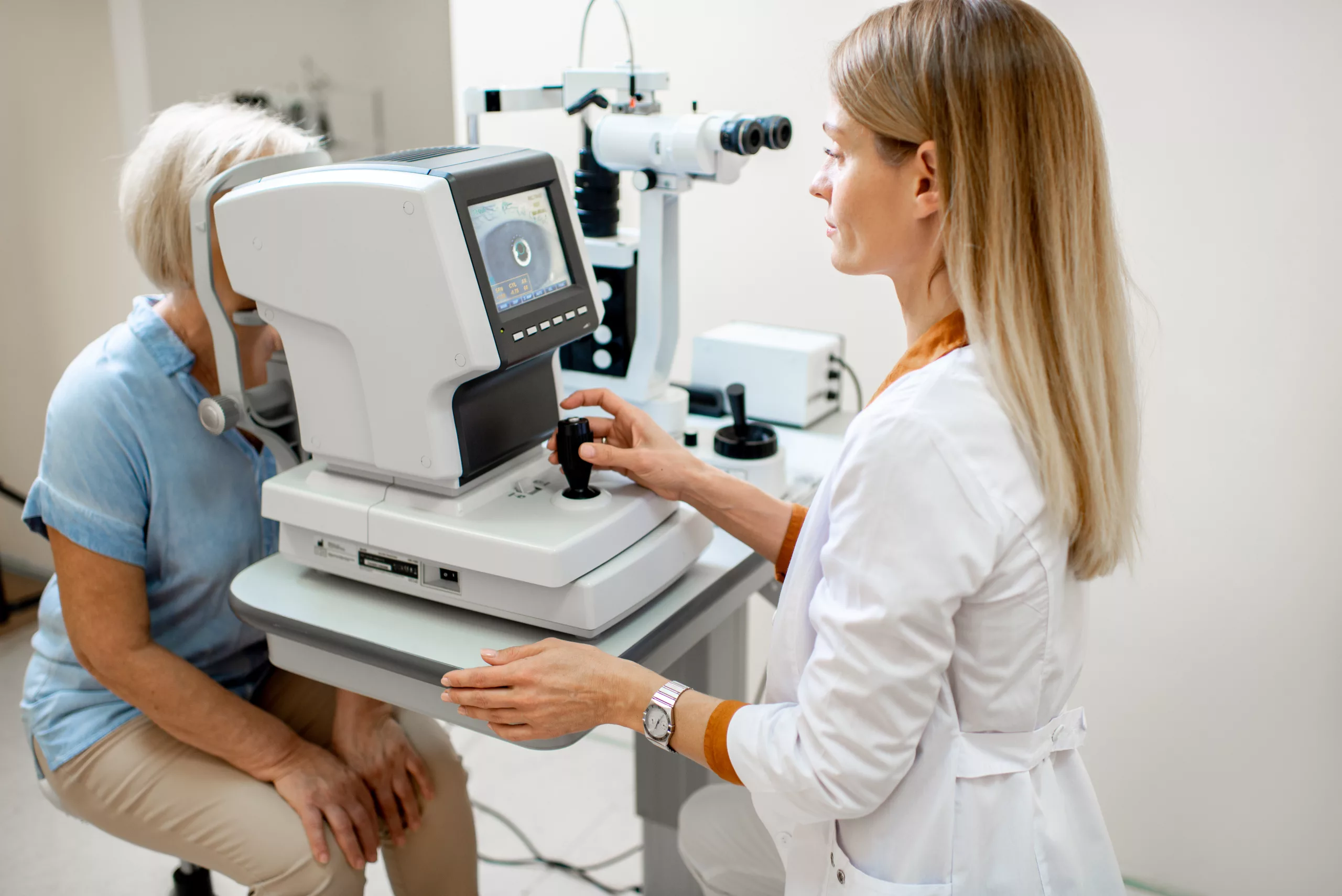Rebound Tonometry: A Comprehensive Guide
Introduction
Rebound tonometry is a modern, non-invasive method used to measure intraocular pressure (IOP), which is crucial for diagnosing and managing conditions such as glaucoma. This guide provides an in-depth look at rebound tonometry, explaining its principles, advantages, limitations, and clinical applications.
What is Rebound Tonometry?
Rebound tonometry is a technique for measuring IOP by using a small, handheld device to make brief contact with the cornea. Unlike traditional methods, this technique involves a small, lightweight probe that makes brief, gentle contact with the eye, causing minimal discomfort.
How Rebound Tonometry Works
The principle behind rebound tonometry involves a small, soft probe that lightly touches the cornea. The device then measures the time it takes for the probe to rebound after contact with the cornea. The speed and characteristics of the rebound provide information about the IOP. The device calculates the pressure based on these measurements, offering a quick and accurate assessment of eye pressure.
Advantages of Rebound Tonometry
- Non-Invasive: Rebound tonometry is a non-invasive procedure, which means it does not require any eye drops or anesthesia.
- Comfort: The probe is soft and lightweight, making the procedure comfortable for patients, especially useful for children and those with sensitive eyes.
- Quick and Efficient: The measurement is quick, often taking just a few seconds, allowing for efficient assessment in busy clinical settings.
- Portable: Many rebound tonometers are compact and portable, making them suitable for use in various settings, including bedside or remote locations.
- Accuracy: Rebound tonometry is highly accurate and reliable, with results comparable to those obtained from Goldmann applanation tonometry, the gold standard for IOP measurement.
Limitations of Rebound Tonometry
- Limited Use in Certain Conditions: Rebound tonometry may be less accurate in cases of severe corneal abnormalities, such as corneal scarring or infections.
- Requires Proper Technique: Accurate results depend on proper technique and alignment of the probe, which may require some training for the operator.
- Variability: While generally reliable, there may be some variability in readings depending on the device used and the specific clinical conditions.
Clinical Applications
- Glaucoma Monitoring: Rebound tonometry is commonly used to monitor IOP in patients with glaucoma, providing valuable information for managing the condition and adjusting treatment plans.
- Routine Eye Exams: It is used in routine eye exams to screen for elevated IOP, which can be an early sign of glaucoma.
- Pediatric Assessments: Its non-invasive nature makes it ideal for use in pediatric patients, where traditional methods might be less well-tolerated.
- Home Monitoring: Some rebound tonometers are designed for home use, allowing patients to monitor their IOP regularly and share the data with their healthcare provider.
Future Directions
Rebound tonometry continues to evolve, with advancements aimed at improving accuracy, ease of use, and integration with other diagnostic tools. Research is ongoing to enhance the technology and expand its applications, potentially leading to even more widespread use in various clinical settings.
Conclusion
Rebound tonometry is a valuable tool in the field of ophthalmology, offering a quick, comfortable, and reliable method for measuring intraocular pressure. Its non-invasive nature and ease of use make it an attractive option for both routine eye exams and specialized glaucoma management. As technology advances, rebound tonometry is likely to become an even more integral part of eye care, enhancing our ability to diagnose and manage ocular conditions effectively.
For those interested in learning more about ocular health and advanced diagnostic techniques, stay tuned for further insights and updates on emerging technologies in ophthalmology.
World Eye Care Foundation’s eyecare.live brings you the latest information from various industry sources and experts in eye health and vision care. Please consult with your eye care provider for more general information and specific eye conditions. We do not provide any medical advice, suggestions or recommendations in any health conditions.
Commonly Asked Questions
Coverage for rebound tonometry varies by insurance plan. It is advisable to check with your insurance provider to understand the specifics of your coverage for this diagnostic procedure.
If rebound tonometry results are abnormal, further evaluation by an ophthalmologist is necessary. Additional tests and a comprehensive eye examination will help determine the underlying cause and appropriate treatment.
Yes, rebound tonometry can be used for patients wearing contact lenses. However, it is generally recommended to remove contact lenses before the test for the most accurate measurement.
Rebound tonometry is highly accurate and often provides results comparable to those of Goldmann applanation tonometry. It is a reliable method for assessing IOP in various clinical settings.
Rebound tonometry is generally safe with minimal risks. Some patients may experience temporary discomfort or a slight sensation during the test, but serious side effects are rare.
No special preparation is typically needed before rebound tonometry. Patients may be asked to sit still and avoid touching their eyes during the procedure.
Rebound tonometry is a tool used to measure intraocular pressure, which can help in diagnosing glaucoma. However, a comprehensive eye exam, including other diagnostic tests, is necessary for a definitive diagnosis.
The frequency of rebound tonometry depends on individual needs and medical conditions. For routine eye exams, it may be performed annually or as recommended by an ophthalmologist. For glaucoma management, it may be done more frequently.
Yes, rebound tonometry is suitable for all age groups, including children and elderly patients. Its non-invasive nature and minimal discomfort make it particularly useful for younger patients.
Rebound tonometry uses a soft probe to measure IOP through rebound characteristics, while applanation tonometry (Goldmann) involves flattening a small area of the cornea to measure IOP. Rebound tonometry is less invasive and often more comfortable for patients.
news via inbox
Subscribe here to get latest updates !







